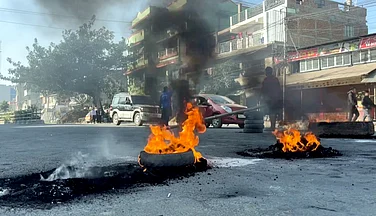As the planet's climate scenario continues to exacerbate, a latest study published in the Nature journal, one of the most critically acclaimed science journals in the world, one in every two El Nino events could be extreme by 2050 if current trends in greenhouse gas emissions continue.
Earlier as well several studies have presented substantial evidence that a consistently warming climate leads to frequent and intense El Nino phases, which are known to fuel extreme weather events.
What are El Nino and La Nina?
El Nino and La Nina, the opposite extremes in the El Niño/Southern Oscillation (ENSO) cycle, amplify the unpredictability of weather patterns.
El Niño, in simple words, is defined as a weather pattern involving abnormal warming of surface waters in the equatorial Pacific Ocean leading to extreme heat in many parts of the world and the ocean.
According to National Oceanic and Atmospheric Administration (NOAA), La Niña, on the other hand, demonstrates the opposite effect of El Niño. During La Niña events, trade winds are even stronger than usual, pushing more warm water toward Asia. Off the west coast of the Americas, upwelling increases, bringing cold, nutrient-rich water to the surface. These cold waters in the Pacific push the jet stream northward.
What does the study say?
The latest study conducted by researchers including those from the University of Colorado Boulder, United States, is based on computer models that simulated El Nino events over the past 21,000 years, the peak of Earth's last Ice Age, one of the planet's coldest periods.
The study suggested that El Nino events with time increasingly became more frequent and intense as a result of global warming. The model used in the study also suggested that if green house emissions continue at current rates, by 2050, one in every two El Nino events could be an extreme.
"The highest (ENSO) variability occurs in response to greenhouse warming, with one in two events reaching extreme amplitude," the authors said in the study published in the journal Nature.
"If these extreme events become more frequent, society may not have enough time to recover, rebuild and adapt before the next El Nino strikes. The consequences would be devastating," said Pedro DiNezio, an associate professor at the University of Colorado Boulder and the lead author of the study.
Heatwave, longer monsoon, severe winter: Impacts of El Nino and La Nina
From scorching heatwaves during summer to extended monsoons, the weather patterns of the Indian subcontinent have been largely affected by the shifts in climate scenario. The 2023-24 El Nino has been held accountable for breaking temperature records for 12 straight months, starting June last year. The climate driver is also thought to have played a pivotal role in this summer's record-breaking temperatures registered across India, especially in the north.
Currently, neutral conditions are said to be prevailing before La Nina is expected to set in later this year. Following an extended monsoon, a 'severe' winter is predicted by the World Meteorological Organisation (WMO) for the Indian suncontinent this year owing to the 60 percent possibility of La Niña conditions towards the end of this year.




















